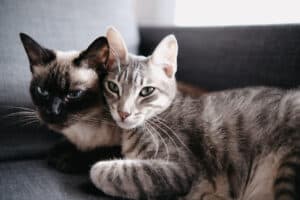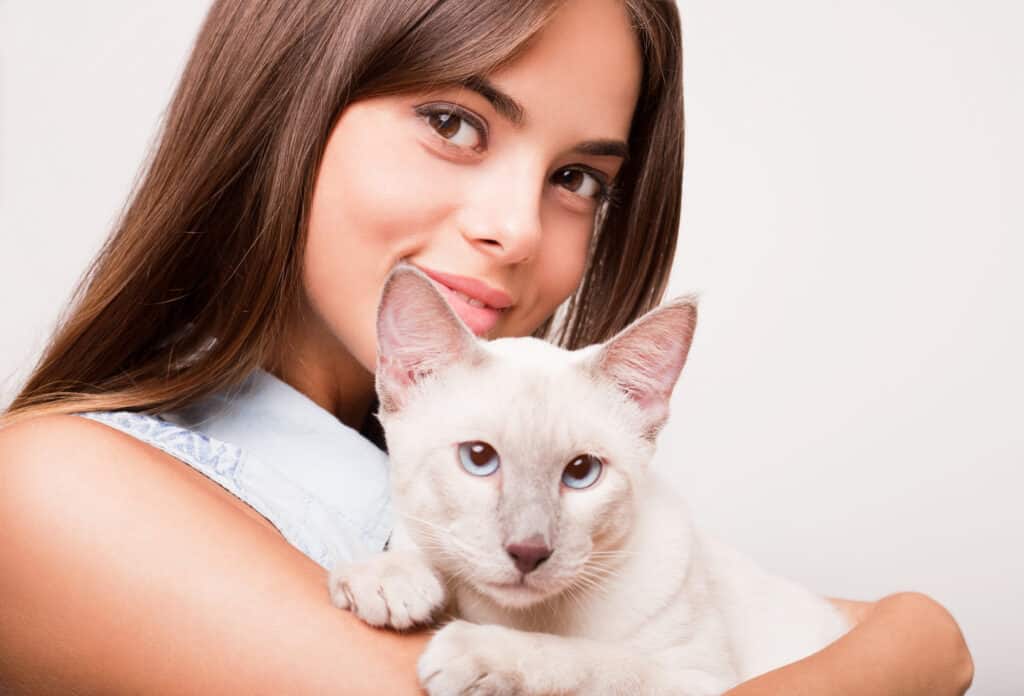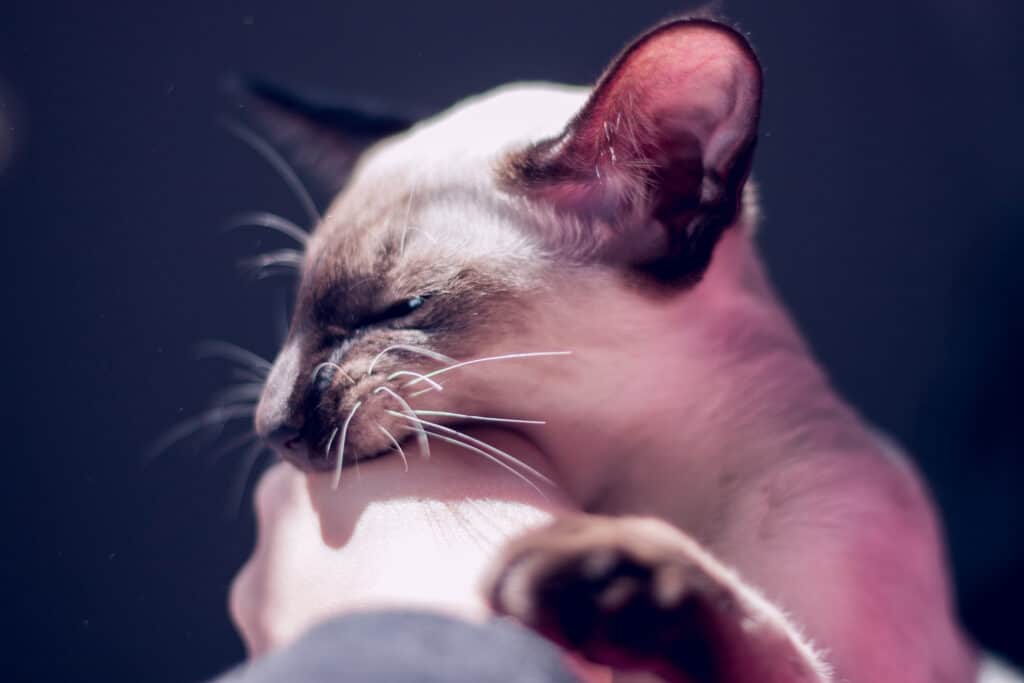Siamese cats have become one of the most popular cat breeds for people who want to adore the beauty of a purebred cat.
Are you planning to get one of these wonderful cats to add to your family and looking for what you need to know about Siamese cats?
You’ve come to the right place, we’ll dive right in.
What is a Siamese cat?
Siamese cats have a distinguished set of characteristics that make them relatively easy to recognize.
Siamese cats are a pure breed that has a distinctive coloring where their bodies are creamy or ivory white with darker color points towards their tail, paws, and face. They have lean and muscular bodies and are known for their loving personality, intelligence, and craving for companionship. Siamese cats originated in Thailand, formerly known as Siam.
Quick Facts
| Origins | Siamese cats originate from Thailand, formerly known as Siam. The Siamese cat is one of the oldest cat breeds in the world. They have been documented as early as the 14th century which makes this breed over 700 years old. |
| Popularity | As of 2019, the Siamese cat is the 12th most popular cat breed in the USA |
| Average lifespan | Siamese cats live relatively long for purebred cats. Generally up to a healthy age of 11 to 15 years old. |
| Average size | Siamese cats are of average size, roughly 8-10 inches tall and about 14 inches long. They weigh about 8-10 pounds. |
| Coat type and color | Siamese cats have short fur without an under-coat. Their distinctive coloring is creamy or ivory white with darker colors at their paws, face, ears and tail. |
| Personality | Siamese cats have a loving personality and crave human interactions. They are very vocal, love to play and are praised for their intelligence. |
What do Siamese cats look like?
The most distinctive characteristic of a Siamese cat is the coloring of its coat. All Siamese cats have a genetic anomaly that causes their fur to darken at the cooler places (‘ends’ or ‘points’) of their body.
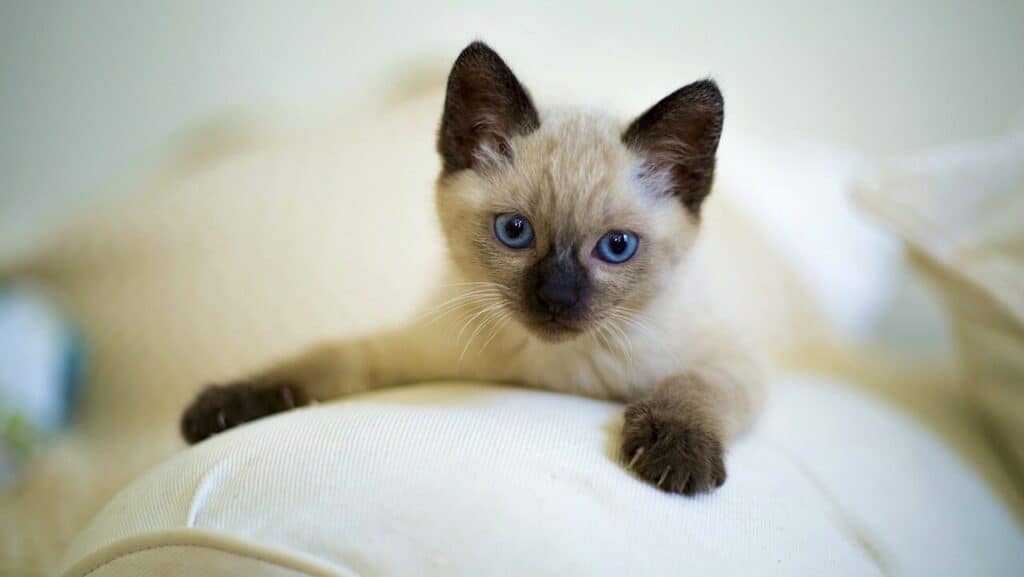


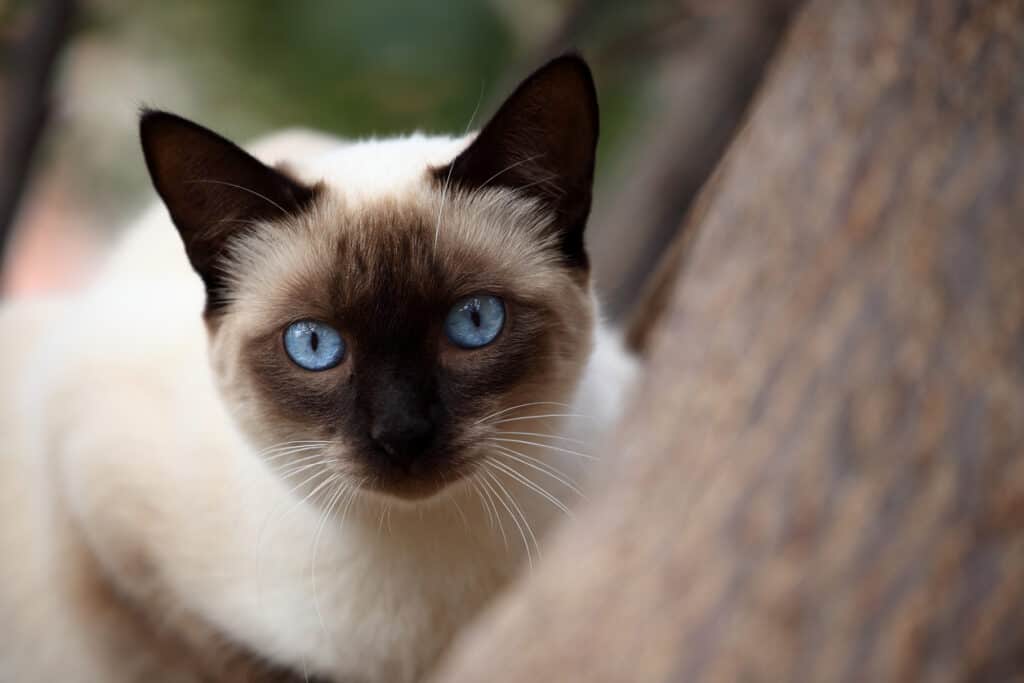


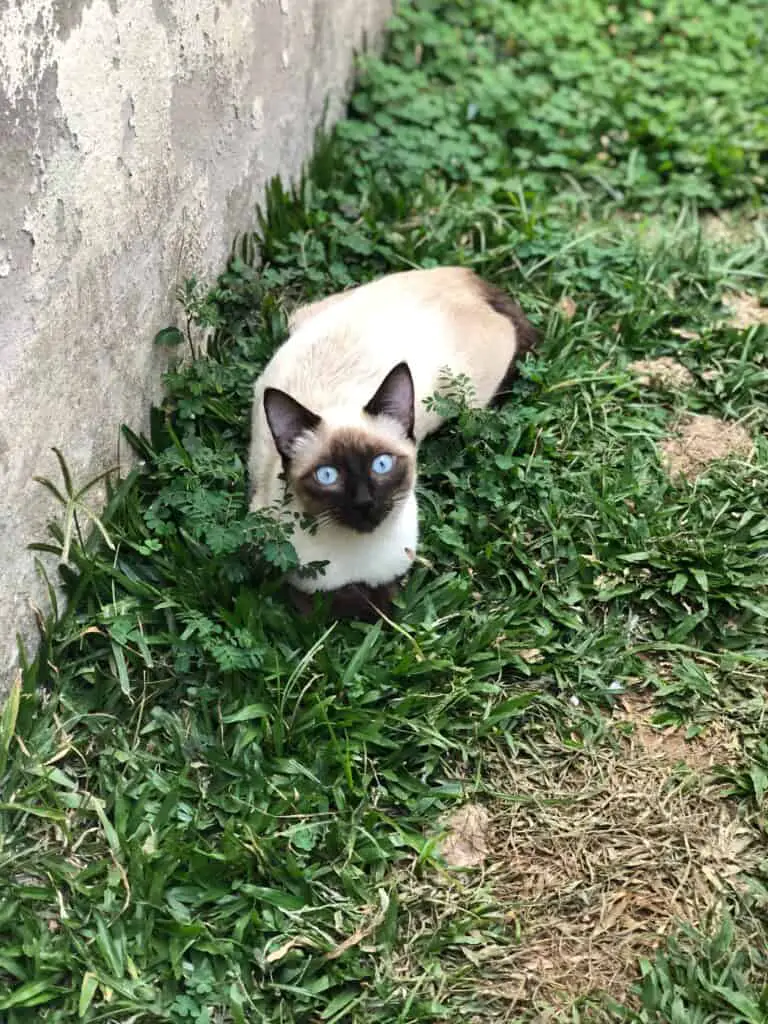
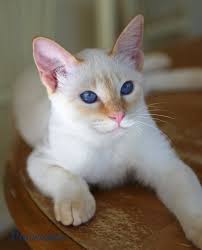


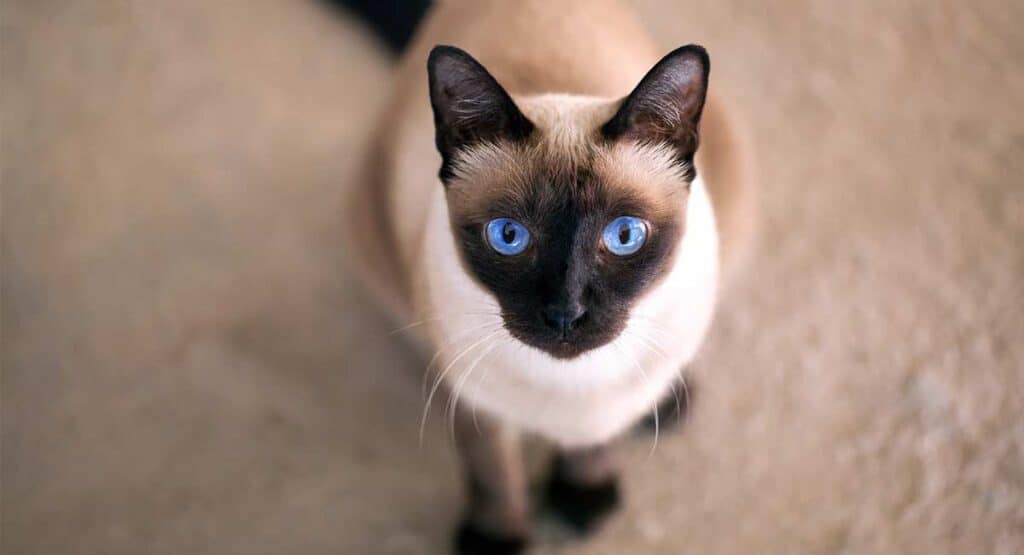
Siamese cats have muscular and lean bodies with thin, but long, tails. Their fur is soft and short. They don’t have an ‘undercoat’ which greatly reduces the need for regular grooming and tends to be better for people with (moderate) cat allergies.
These cats are of average height, roughly between 8 and 10 inches (20-25cm), and are about 11-14 inches long (29-36cm). A healthy, fully grown Siamese cat weighs between 8 and 10 pounds (4.6-4.5 Kg).
Another characteristic of purebred Siamese cats is that they have clear, bright, and piercing blue eyes, caused by the same genetic anomaly that causes their albinism.
Siamese cats are often confused with other breeds that look similar, for example Burmese cats. See the differences between Siamese cats and Burmese cats in our article right here.
Types of Siamese cats
Apart from the many crossbreeds of Siamese cats with other breeds, which we will discuss later, there are essentially two types of purebred Siamese cats.
- Traditional Siamese cat: Often referred to as the Applehead Siamese for its round, apple-shaped, head and slightly more chubby body.
- Modern Siamese cat: This is the very skinny Siamese with a wedge-shaped head.
Color variations
Siamese cats come in several color variations, referred to as ‘color points’.
While there are over 30 different documented Siamese color variations, not all of them are officially recognized (by the Cat Fanciers Association, CFA) as purebred Siamese.
Several of those color variations are achieved by crossbreeding Siamese cats with other breeds such as Tabby cats.
The officially recognized colors are:
- Chocolate point
- Seal point
- Lilac point
- Blue point
What causes a Siamese’s unique coloring?
A Siamese cat’s unique coloring is caused by the ‘Himalayan gene’ which causes temperature-based albinism. The color parts of a Siamese cat’s body turn darker while the warmer parts remain white. This gene is also responsible for their light blue eyes, another characteristic of Siamese cats.
The darkened parts of a Siamese cat’s body are called color points. These points can be several different color variations which is the basis for their naming.
Apart from the four officially recognized color variations, you will see flame points, tabby points, lynx points, caramel points, tortie points, and so on. These are all caused by crossbreeds of Siamese cats with other breeds.
Suggested reading: All About Siamese Cat Colors
Different types of Siamese cats – Crossbreeds
Over the centuries, the popular Siamese cat has been crossbred with many other breeds and has therefore become the ‘foundation stock’ of several other, independent breeds.
Some examples are the Oriental Shorthair and Colourpoint Shorthair, developed to expand the range of coat patterns; the long-haired variant most often dubbed the Himalayan; and hair-mutation breeds, including the Cornish Rex, Sphynx, Peterbald, and blue-point Siamese cat.
A Siamese cat’s personality
Siamese cats are well-known for their loving personalities. They are social butterflies and generally get along with everyone, both humans and other pets.
Some say that Siamese cats are high-maintenance because they need, and demand, lots of attention from their owners.
This is not necessarily true though, it’s more about the mindset of the owner. When getting a Siamese cat, think more of it as getting a dog. Dogs need regular attention, playtime, and mental, as well as physical, stimulation. The same is true for Siamese cats.
This breed is very dependent on (human) companionship and they will be vocal about it (literally) in case that craving is not satisfied. Lonely Siamese cats are known to suffer from depression or throw a fit like tearing up your sofa or curtains.
Are you looking for a cat that minds its own business and is comfortable staying alone for periods of time, then a Siamese is probably not the best choice for you.
On the other hand, Siamese cats are great for busy families and go extremely well with kids. On top of that,
Do Siamese cats get along with other pets?
Siamese cats get along very well with most other pets, provided that they either have been together from a relatively young age or, are introduced in the right way once they are older.
Are you planning to add a Siamese cat to your family with other pets? We have written two articles about how to best introduce a Siamese cat to your cat or dog.
A Siamese cat’s health
Siamese cats are a relatively healthy breed. Especially compared to other purebred cats, the Siameses are pretty strong cats who generally live to a healthy age of 15 years or older.
As with any (purebred) cat, Siamese cats also have some specific weaknesses or diseases that they are more prone to get than other breeds. Some conditions to look out for are:
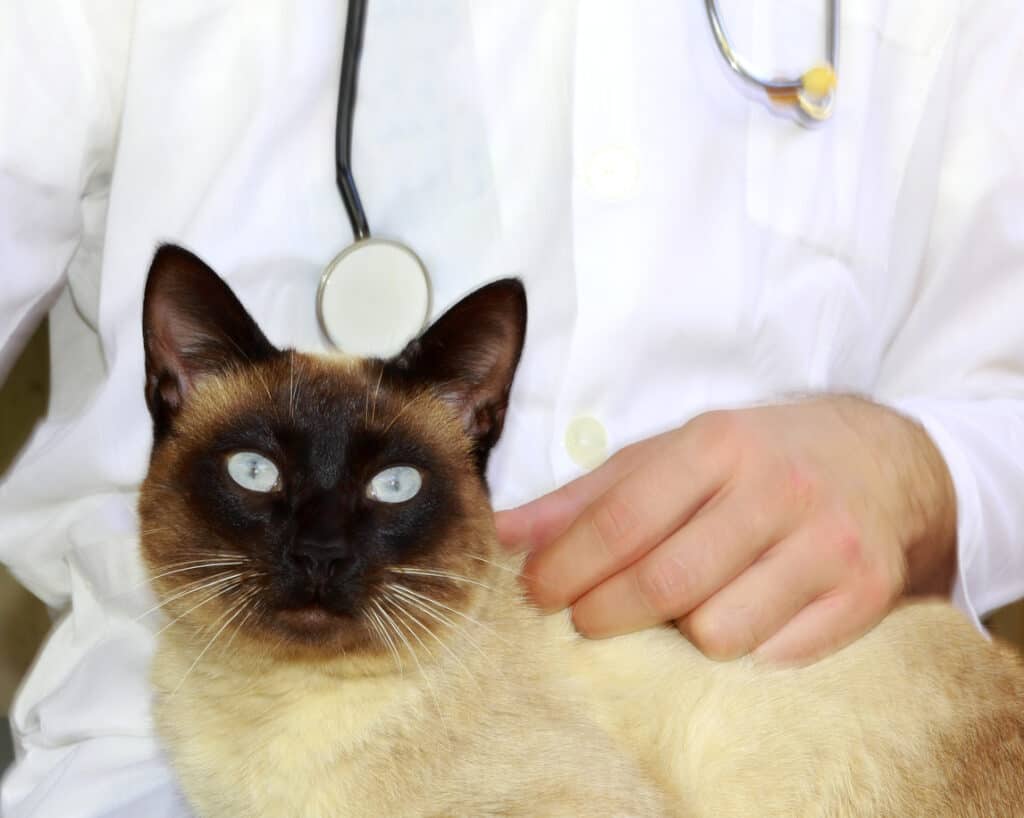
Origin and history of the Siamese cat
All Siamese cats are originally from Thailand which used to be called Siam in the old days.
The Siamese Cat first appears in a collection of poems, called the “Tamra Maew”, which originated in Thailand in the 14th century.
After the Burmese-Siamese war in 1767, it is believed that the King of Burma found this poem about the Siamese Cat.
They were described as rare, only living in palaces of the Thai royalty. According to the poem, those who owned one would become wealthy.
The king ordered all the Siamese Cats to be brought to Burma to bring his country riches and prosperity.
The Siamese eventually made its way west, and in 1878, the first Siamese Cat was brought to the United States, where it has since become a favorite among cat lovers.
These cats were (and still are) known for their elegance, physical beauty, and clever mind, and they still are.
The Thai people believe that when a family member dies, their soul enters the body of a Siamese cat. As a result, these cats were held in very high esteem amongst royal families and are still very popular in Thailand.
Love reading more about Siamese cats?
Have a look at our other articles about this magnificent breed.
Our most popular article:
Introduction to Siamese Cats
Everything you need to know.
Or have a look at these popular reads from our website…
-

Why Do Siamese Cats Always Have Blue Eyes?
If you’ve ever looked up from work to see your cat staring at you, then the first thing you probably […]
-
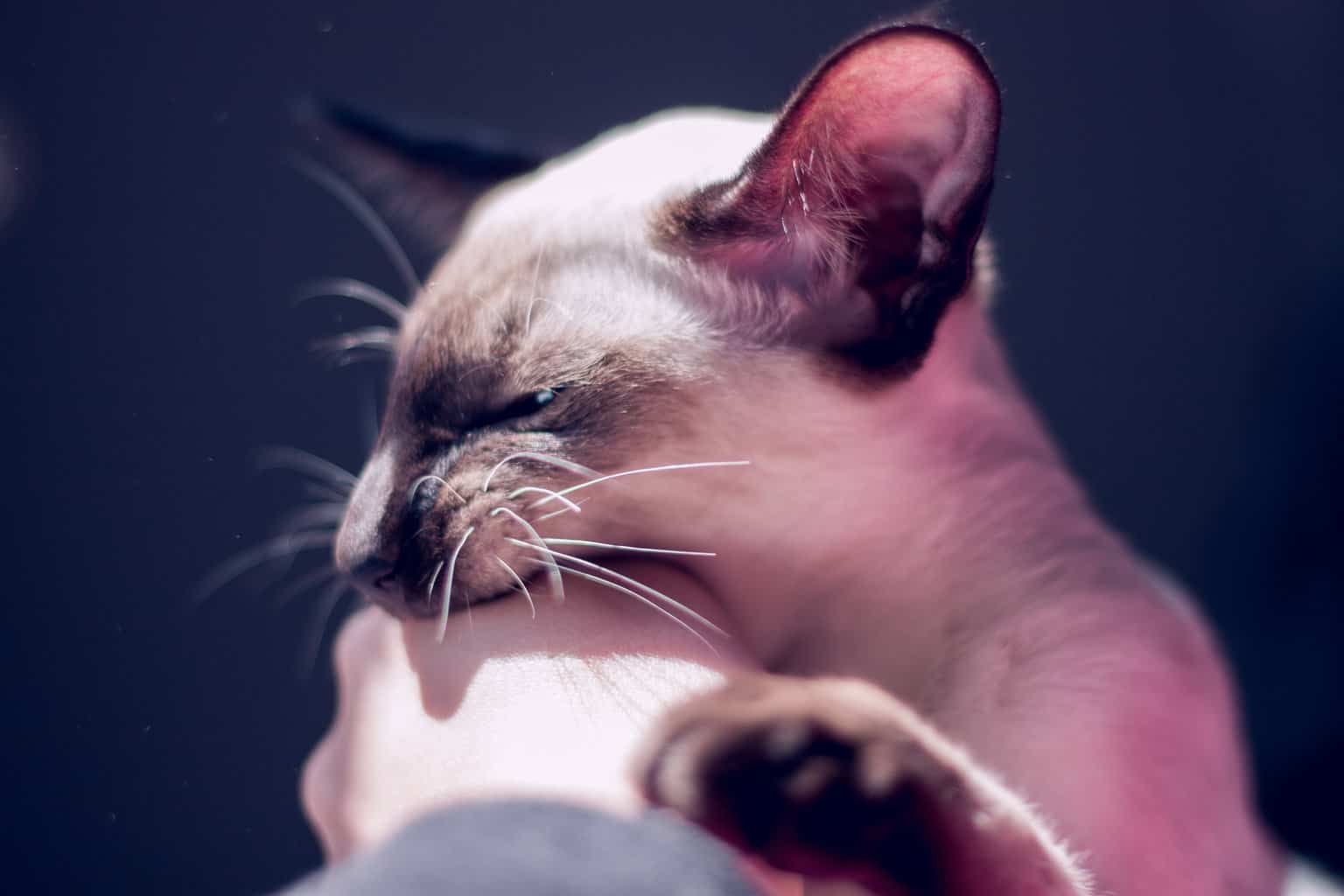
Why Does Your Siamese Cat Bite So Much?
Siamese cats are a popular breed for their distinct beauty and character, so you might be surprised to find out […]
-

Wedgehead Siamese Cats Versus Traditional Siamese Cats
Siamese cat breeds are consistently ranked in the top 2 or 3 of the most sought-after cats in the world […]








